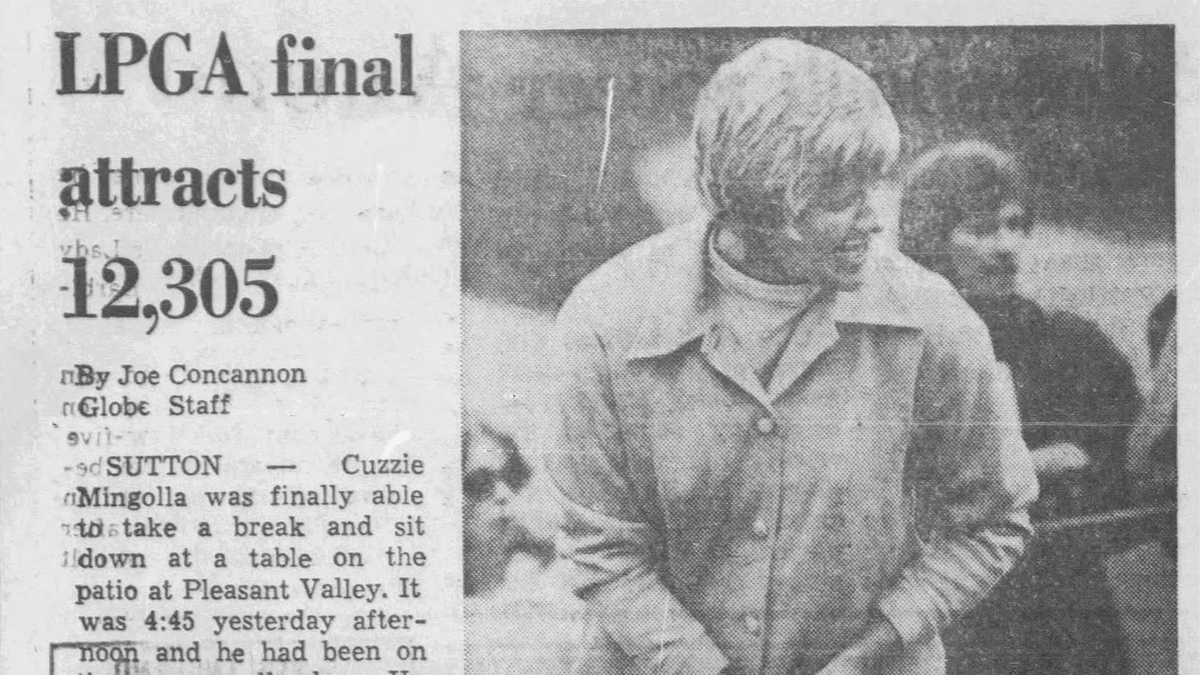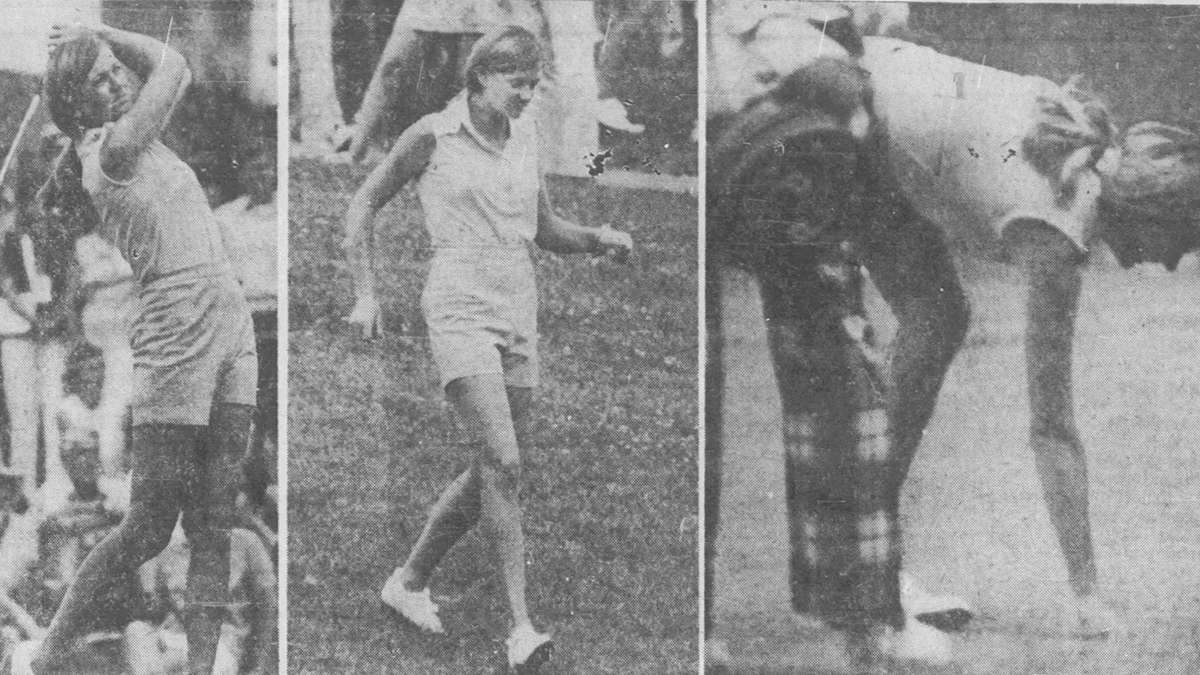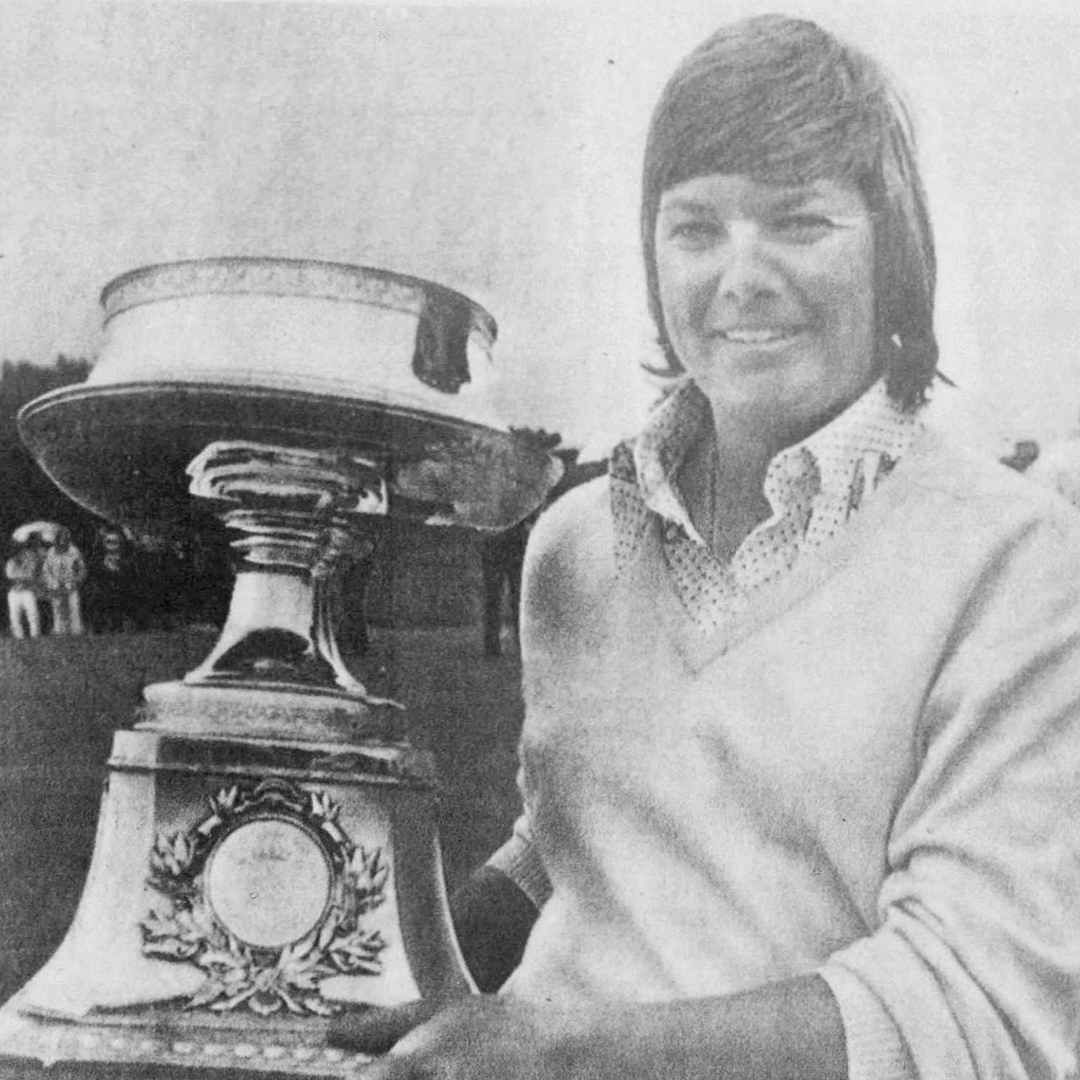By Steve Derderian
sderderian@massgolf.org
–August 30, 2024-
Recency bias may indicate that Boston and New England at large has developed into the world’s best sports town due to the success of its beloved professional teams in the 21st century alone. But as those who have been around long enough will tell you, the enthusiasm for big-time sporting events has always been unrivaled. If you bring the best in the world here, people will come.
Or let’s put it this way: In 1974, the U.S. Open and LPGA Championship represented the most significant events during that time of year for the male and female pros. When it rained on the final day of the infamous Massacre at Winged Foot, which Hale Irwin won with a total score of +7, people largely stayed home — estimated crowd: 10,000. A week later, when it poured throughout Sunday’s final at Pleasant Valley Country Club, tucked into the Blackstone Valley town of Sutton, more than 12,000 spectators lined the fairways to watch the best women in the world compete.
“It was an astonishing turnout,” uttered Cuz Mingolla, Pleasant Valley’s longtime owner, who had put up the $50,000 championship purse that year without a corporate sponsor. “We had to open up the parking lots at noon that we were saving for the men’s tournament.” (In 1969, Pleasant Valley created its own PGA Tour event, the New England Classic, which it exclusively hosted through 1998).
It was a different era in golf, with persimmon and balata for equipment and local youngsters as caddies. Corporate tents were not yet part of the landscape. However, the choice to move the LPGA Championship to Pleasant Valley was no accident. The 1966 Lady Carling Open at PV topped 10,000 spectators, leading all 30 events that year. Kathy Whitworth, whose 88 wins are the most all-time on tour, won in 1967, the first of seven LPGA Championships held at Pleasant Valley in an eight-year stretch.
When the 1974 season rolled around, the LPGA saw increased media attention, which was reflected in the crowds of hardy New Englanders who gathered to see the competitors up close. What transpired was a mixture of big-time shots, tension between players, challenging and varied weather conditions, and large summer crowds each day to witness it all.

The strong field included several top players, such as Sandra Haynie, Carol Mann, Sandra Palmer, and Whitworth. But much of the home crowd was behind local figures such as Joanne Carner, who made her home most of the year in Seekonk, and New Hampshire native Jane Blalock. Future Hall of Famer Pat Bradley of Westford was also making her LPGA Championship debut and was in the mix for Rookie of the Year (Jan Stephenson ultimately won the honor).
Carner entered this tournament with momentum, having won three of the past five events. With her powerful swing and commanding presence, she tallied an impressive record that eventually made her the second player in LPGA history to cross the $1 million mark in career earnings. Despite her friendly demeanor off the course, Carner was a formidable opponent, earning her the nickname “Big Mama” for her dominance and larger-than-life personality.
“She was so much fun because she had a big personality and loved New England,” said Chuck Tidman, a local looper who was selected off the caddie bench at PV to carry for Carner in 1973 and 1974. “Everybody loved her. She would bang it over corners. She interacted with the crowd well. It was fun to caddie for her, and she made it easy.”
Blalock, on the other hand, was a rising star known for her consistency and remarkable resilience. Although she had yet to win a major title by 1974, Blalock was always in contention. After her second-place finish at PV in 1972, many believed it was only a matter of time before she broke through.
The tournament began under clear skies, and Carner got off to a solid start, her powerful drives cutting through the challenging, rolling fairways of Pleasant Valley. Hole No. 17 particularly heightened the stakes for the field, especially those vying for the lead. At 390 yards, it required an accurate drive to a precise landing area. Club selection then became key because there was water short of and over the green.
While rain began pouring in Friday’s round, it started with quite a flash for Jane Blalock, who aced the par-3 opener (135 yards) with a five-iron. However, it may have done more harm than good as Blalock struggled to regain focus on shot 77 in round 2, 10 strokes behind leader Palmer, who shot a tournament record of 66, all while shielding her rain-spotted glasses with her visor throughout the round.
“I wish the ball had hung on the lip,” Blalock told reporters after following up the ace with bogey on three of the next four holes. “All the commotion and excitement shook me up and may have changed my game.”

Carner slid into third place with her best round of 70 on Friday, but on Saturday, things got a little testy. Before a long birdie attempt on the 4th, she exchanged words with Palmer, who Carner claims was moving around while she was trying to putt. Carner was fired up after her putt fell, but words continued between the two all the way to the next tee. “This is more like I see with members,” Tidman recalled at the time.
The incident didn’t go further than that, but Carner said she lost her concentration, making three consecutive bogeys to shoot 75. However, she still was just three off the lead heading to the final round. Blalock, meanwhile, was six back with Whitworth, while Bradley was seven back.
The final round was set against the backdrop of a course that had grown increasingly damp and unforgiving. Carner, Haynie, and Mann were all in the mix, with Haynie holding a slim lead. For Carner, this was a familiar situation—she had been in the hunt for major titles many times before, including the 1971 U.S. Women’s Open, and was familiar with the pressure in crunch time.
On the front nine, Carner played with determination, making crucial putts in her attempt to keep pace with Haynie. However, Haynie’s lead stretched to six with a 12-footer on the 11th. After a bogey on the 16th, however, Haynie struggled to get the ball on the green, repeating mistakes that had cost her the title in years past. Up four strokes on the 17th, a double carry over water (tee and green), trouble lurked again. Haynie found the rough and had to chip out from behind a tree. Still tight with thoughts of past failures, she hit her third fat that seemed destined for the water and instead landed into a bank, checking up about 6 inches shy of the hazard.
The thought of Haynie playing her fourth shot still plays in Tidman’s head today, “It’s in the mud, half buried, right foot in the pond, and I remember seeing a big swing, chunks of mud, weed and water in the air, and in the midst, I see a golf ball with no spin, came up on the green, and she made six.
“It’s not the best score in the world, but it’s better than seven or eight,” Haynie, the then-31-year-old Texan, said after the victory. “The last five holes here are like sitting on a keg of dynamite.”

Though a slight door had opened, Carner missed her birdie putt on the 17th, and the introverted Haynie made par on the 18th to hold off Carner by two strokes and earn her second LPGA title.
“You can’t see what it is like inside,” Haynie said. “You will just have to believe how very much this means to me.”
While Mingolla and the club basked in the vast turnout of spectators who witnessed the final round, it would spell an end to an era. As the echoes of the past linger, the 1974 LPGA Championship at Pleasant Valley remains a bittersweet chapter in the history of golf. The LPGA decided to move the tournament the following year, eventually settling on a decade-long stretch at Jack Nicklaus Golf Center, today known as the Grizzly Golf and Social Lodge.
Still, the end 50 years ago was a moment when women’s golf commanded the spotlight, proving that it could draw the crowds and captivate the imagination just as powerfully as its male counterpart. Though the championship moved on to other courses, the legacy of that day endures—a reminder that for one brilliant moment, Pleasant Valley was the center of the golfing world, forever etched in the memories of those who were fortunate enough to witness it.
Mass Golf is a 501(c)3 non-profit organization that is dedicated to advancing golf in Massachusetts by building an engaged and inclusive community around the sport.
With a community made up of over 130,000 golf enthusiasts and over 360 member clubs, Mass Golf is one of the largest state golf associations in the country. Members enjoy the benefits of handicapping, engaging golf content, course rating and scoring services along with the opportunity to compete in an array of events for golfers of all ages and abilities.
At the forefront of junior development, Mass Golf is proud to offer programming to youth in the state through First Tee Massachusetts and subsidized rounds of golf by way of Youth on Course.